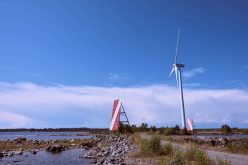 The National Oceanic and Atmospheric Administration (NOAA) has launched a self-paced, 80-minute online training introducing several fundamental concepts of LiDAR to help you get more out of your LiDAR point cloud data.
The National Oceanic and Atmospheric Administration (NOAA) has launched a self-paced, 80-minute online training introducing several fundamental concepts of LiDAR to help you get more out of your LiDAR point cloud data.
The training demonstrates how high-accuracy lidar-derived elevation data support natural resource and emergency management applications in the coastal zone. The material provides geospatial analysts with the information needed to understand the characteristics of lidar that have direct impacts on mapping and spatial analysis projects. A demonstration is included to show how lidar data can be downloaded from NOAA’s Digital Coast.
In the course, you’ll learn how to:
- Define lidar
- Select types of elevation data for specific coastal applications
- Describe how lidar data are collected
- Identify the characteristics of lidar data
- Distinguish between lidar data products
- Recognize aspects of data quality that impact data usability
- Locate lidar data sources and additional information resources
Participant Background Requirement:
- Familiarity with basic remote sensing principles and geographic concepts
- Understanding Map Projections, Datums, and Coordinate Systems e-learning course is recommended
- Internet connection
- Flash plug-in (download)











